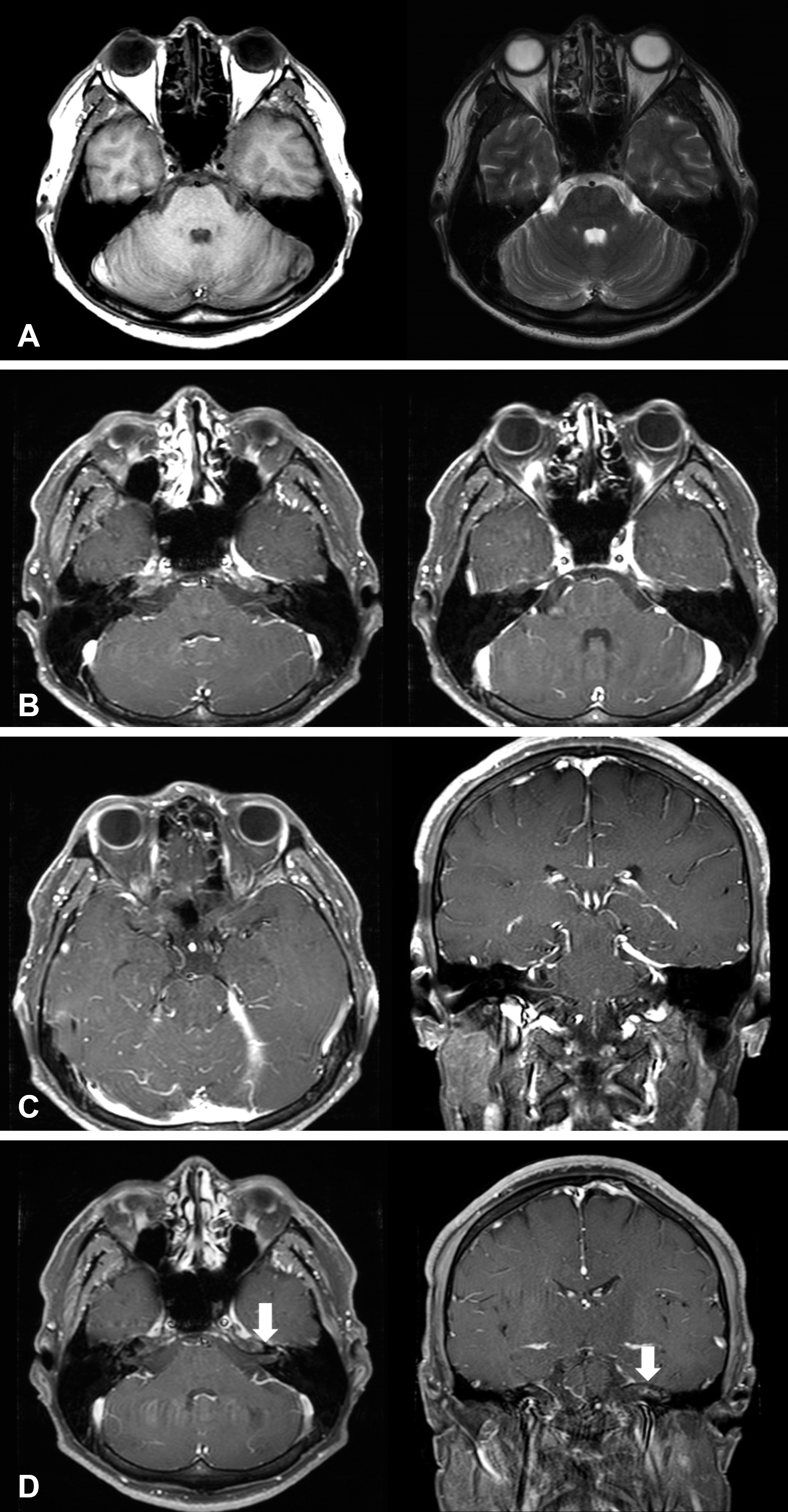Korean J Clin Neurophysiol.
2016 Jun;18(1):11-13. 10.14253/kjcn.2016.18.1.11.
Idiopathic Hypertrophic Cranial Pachymeningitis Masquerading as Tolosa-Hunt Syndrome
- Affiliations
-
- 1Department of Neurology, Wonkwang University Sanbon Medical Center, Gunpo, Korea.
- 2Department of Neurology, Wonkwang University School of Medicine, Iksan, Korea. hypppark@hanmail.net
- 3Institute of Wonkwang Medical Science and Regional Cardiocerebrovascular Center, Iksan, Korea.
- KMID: 2328822
- DOI: http://doi.org/10.14253/kjcn.2016.18.1.11
Abstract
- Idiopathic hypertrophic cranial pachymeningitis (ICHP) is diffuse inflammatory process of the dura mater. ICHP can produce similar presentation with Tolosa-Hunt syndrome (THS) if it involves cavernous sinus. A-29-year old male with persistent headache and no definite neurologic dysfunction was noted. Two weeks later, he complained of ophthalmoplegia, and his symptoms were thought to be manifestations of THS. Brain magnetic resonance images revealed diffuse thickened, enhanced pachymeninges in left tentorium. The patient was diagnosed with IHCP. We report a IHCP patient who showed very similar presentation as THS.
MeSH Terms
Figure
Reference
-
1.Muthukumar N., Senthilbabu S., Usharani K. Idiopathic hypertrophic cranial pachymeningitis masquerading as Tolosa-Hunt syndrome. J Clin Neurosci. 2005. 12:589–592.
Article2.Abhilash K., Minimol KL. Idiopathic hypertrophic pachymeningitis. Int J Res Med Sci. 2013. 1:599–600.
Article3.Lee YC., Chueng YC., Hsu SW., Lui CC. Idiopathic hypertrophic cranial pachymeningitis: case report with 7 years of imaging follow-up. AJNR. 2003. 24:119–123.4.Deus-Silva L., Queiroz Lde S., Zanardi Vd Vde A., Ghizoni E., Pereira Hda C., Malveira GL, et al. Hypertrophic pachymeningitis: case report. Arq Neuropsiquiatr. 2003. 61:107–111.
Article5.Friedman DP., Flanders AE. Enhanced MR imaging of hypertrophic pachymeningitis. Am J Roentgenol. 1997. 169:1425–1428.
Article6.Kumar I., Verma A., Srivastava A., Shukla RC. Idiopathic hypertrophic pachymeningitis? MRI diagnosis and follow up. J Neurol Disord. 2015. 3:1–4.7.Son JY., Ahn BY., Kim DS. Idiopathic hypertrophic cranial pachymeningitis presenting with lower cranial nerve palsy mimicking meningioma. J Korean Neurol Assoc. 2006. 24:79–81.
- Full Text Links
- Actions
-
Cited
- CITED
-
- Close
- Share
- Similar articles
-
- An Idiopathic Hypertrophic Tentorial Pachymeningitis Presented as an Alternating Recurrent Painful Ophthalmoplegia
- A Case of Idiopathic Hypertrophic Cranial Pachymeningitis Associated with Tolosa-Hunt Syndrome
- Tolosa-Hunt Syndrome With Facial Nerve Palsy
- Clinical Observations on Tolosa-Hunt Syndrome
- A Case of an Unusual Tolosa-Hunt Syndrome


